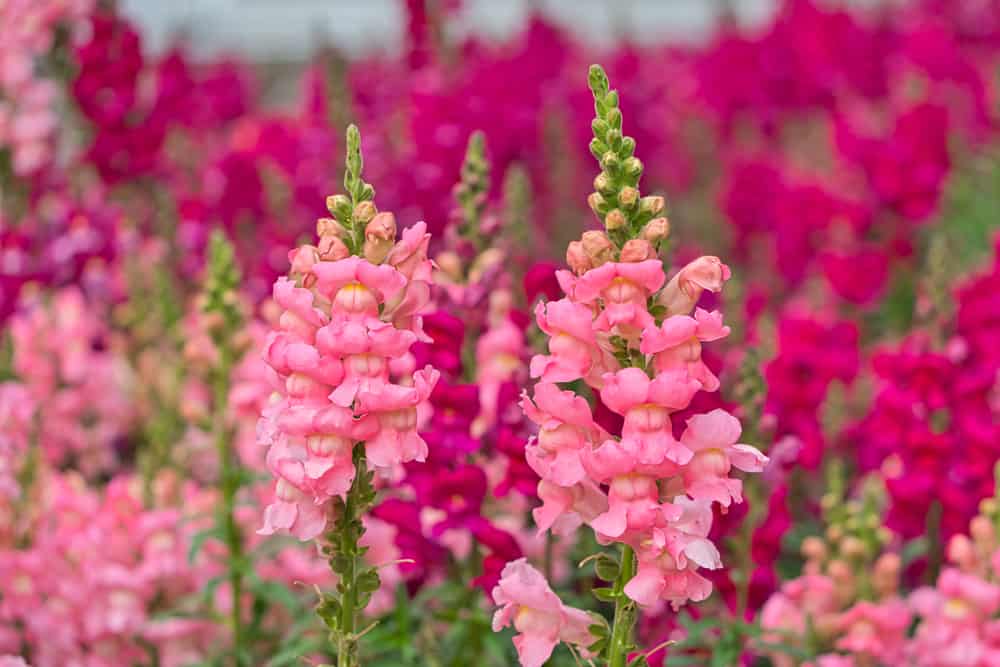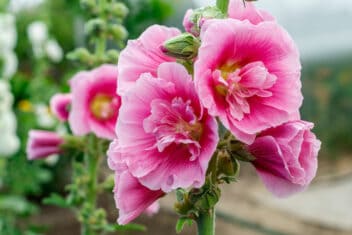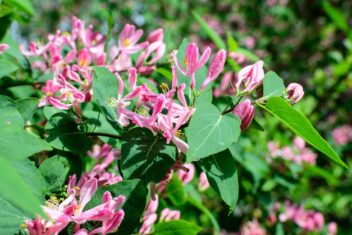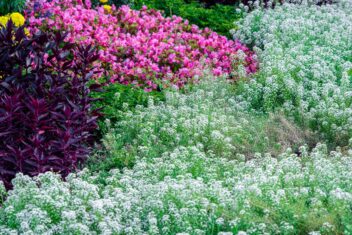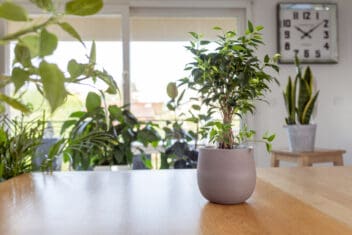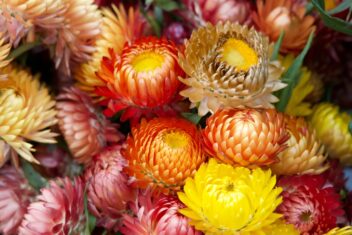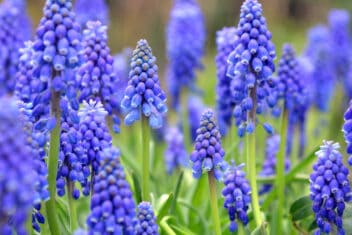Snapdragons (Antirrhinum spp.), have been cultivated and hybridized since the Romans and Greeks used them to keep evil spells and witchcraft at bay.
Prized through the years for their beauty, delicate scent, long vase life, and elegant form, these plants are a common sight in most gardens. This short-lived tender perennial is treated as an annual by many growers.
It’s easy to see why they’re so popular. They bloom for a long time in bright colors with charming flowers that open their mouths like dragons. Let’s explore these cottage garden staples.
Snapdragons Types
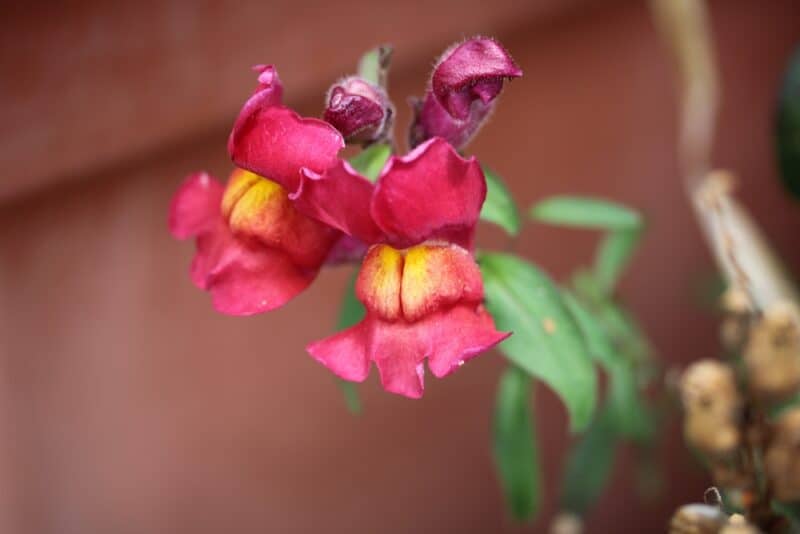
Generally, there are five main sizes of snapdragons available.
- Tall 24-36 inches
- Mid-size 12-24 inches
- Short 9-12 inches
- Dwarf 4-9 inches,
- Trailing 2-10 inches
The flowers come in either single, double (azalea), and open-faced types. The plants are classified by groups I-IV depending on when their ideal growing season and temperature is.
As hybridization continues to create new color combinations and better-performing growth, many companies are launching new and improved varieties of plants.
Let’s check out 13 excellent options:
1. Rocket
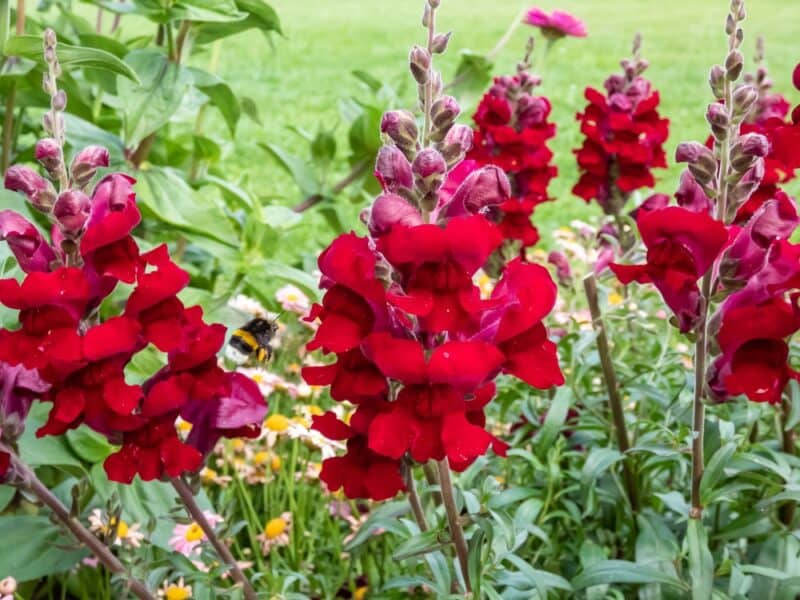
A hardy and reliable form of snapdragon that makes an excellent cut flower, ‘Rocket’ comes in multiple colors of pink, red, white, yellow, salmon, and two-toned variations.
- Blooms: spring, summer and fall
- Height: 24-40 inches
- Heat resistant
- Cold tolerant
- Can overwinter in temperate areas
- 120 days to maturity
- Full Sun or partial Shade
2. Cinderella
The ‘Cinderella’ series is made of plants that bloom for a long time. Generally grown as annuals, they can be cut back to bring on second bloom in the same season. In warmer regions, they will overwinter and return.
‘Cinderella’ offers single flowers in shades of gold, scarlet, cream, pink, yellow, and gold.
- Blooms: Spring and fall
- Height: 18-20 inches
- 80-100 days to maturity
- Full Sun or partial Shade
3. Madame Butterfly
This beautiful series is grown for cut flower arrangements due to its high performance and high number of azalea-type puffed blooms per stem. The astounding colors come in white, pink, red, yellow, apricot, ivory, bronze, and purple.
- Blooms: Spring, summer (in cooler regions), fall
- Height: 30-36 inches
- Cold tolerant
- 100-120 days to maturity
- Full Sun
4. Black Prince
This heirloom cultivar of snapdragon is an excellent cottage garden addition. The blooms are velvet-like in appearance, with maroon to deep burgundy tones on deep green foliage.
- Blooms: Late spring, summer, early fall
- Height: 18-20 inches
- Cold tolerant
- 110-120 days to maturity
- Full Sun or partial light shade
5. Sonnet
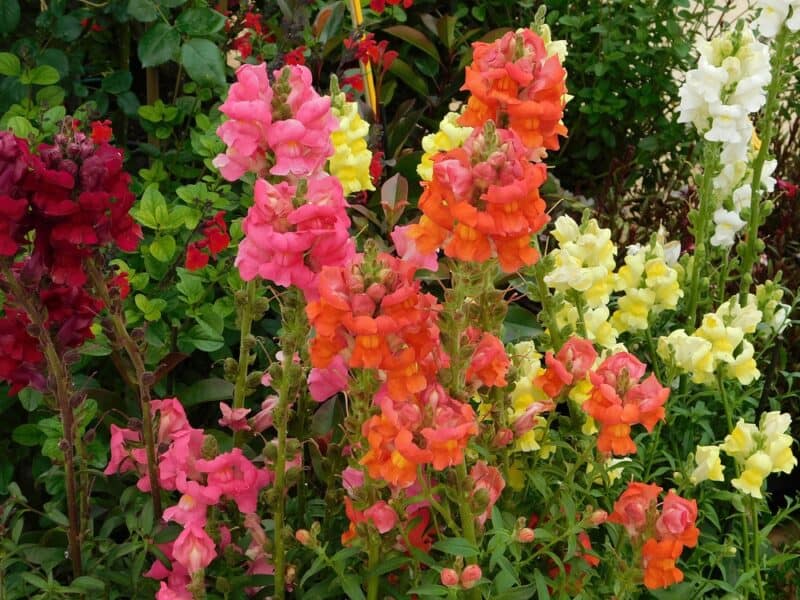
A popular showy series with bloomers with good height. It comes in bright colors of white, red, pink, yellow, and orange.
- Blooms: Spring to fall
- Height: 18-20 inches
- Overwinter possible USDA Zone 7-9
- 115-121 days to maturity
- Full sun
6. La Bella
‘La Bella’ is a series that has open face-blooms that contrast with the traditional dragon-like shape. This cultivar has consistently longer flowering times than many others. It comes in shades of white, yellows, bronze, red, and pink. The blossoms are highly scented.
- Blooms: Late spring to early fall
- Height: 12-18 inches
- Cold tolerant
- 100-120 days to maturity
- Full sun
7. Aroma
Aroma is, as you expect, a fragrant series and one the pollinators are sure to love. The cultivars are named in line with aromatic terms. Look for ‘French Vanilla,’ ‘Fresh Lemon,’ ‘Peach Breeze,’ ‘Magenta Mist, ‘and ‘Spicy Red.’
- Blooms: Spring, Summer, Fall (milder regions)
- Height: 30 inches
- Frost tender
- 80-100 days to maturity
- Full Sun
8. Lucky Lips
‘Lucky Lips’ has blends of contrasting tones of purple-red and white blooms, making it very distinctive. This is an amazing cut flower or for garden borders.
- Blooms: Spring, Summer (regions with cool nights), Fall
- Height: 30 inches
- Heat tolerant
- 75 – 100 days to maturity
- Full Sun
9. Twinny
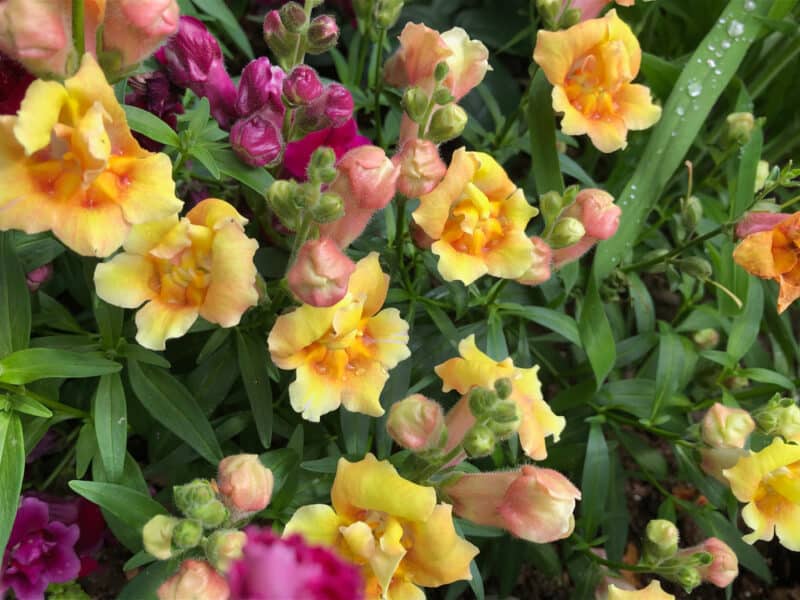
The beautiful semi-double to double open-faced flowers on this series come in two-toned colors. You’ll find peach with yellow, yellow, white with yellow, violet with white, rose, bronze with orange, and apple blossom pink with peach.
This plantis a strong basal grower and consistent flower producer.
- Blooms: Spring, summer, early fall
- Height: 7-15 inches
- Heat tolerant
- Tolerates wet weather
- 80 – 112 days to maturity
- Full Sun or Partial Shade
- Suitable for large containers, borders, landscapes and garden beds.
10. Royal Bride
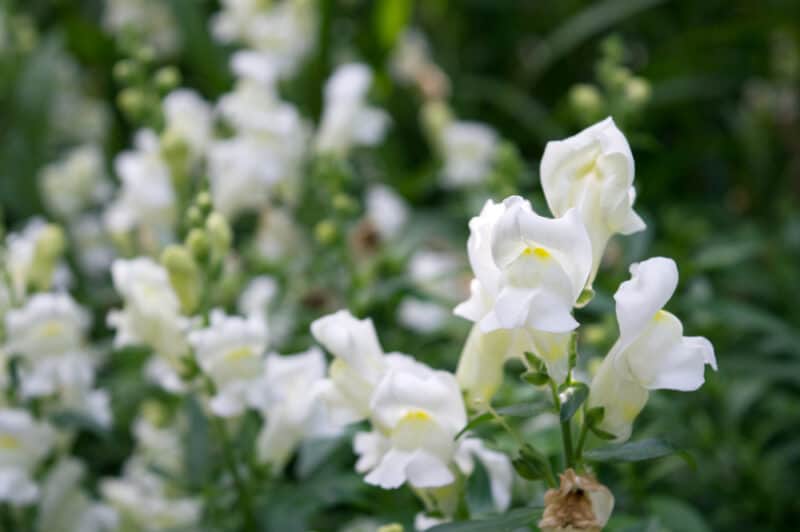
As the name suggests, this plant has prominent pure white blooms in a drooping, fountain form on long stems. Fragrance in this hybrid is of the old traditional snapdragons of the distant past and one to be revered.
- Bloom: Spring, summer, fall
- Height: 36 inches
- Heat tolerant, but prefers cooler nights in summer
- 80- 100 days to maturity
- Full Sun or Partial Shade
11. Frosted Flames
This snapdragon series has two-toned blooms alongside unusual foliage of green with ivory edges. Look for rose, crimson, pink, red, yellow, cream, and combinations.
- Blooms: Spring, summer (cooler evenings), fall.
- Height: 12-18 inches
- Frost hardy to 23°F
- 80-110 days to maturity
- Full Sun to Partial Shade in warmer climates
12. Little Darling
The ivory, bronze, yellow, scarlet, pink, and red flowers on petite ‘Little Darling’ stand out for their vibrancy. It has great ground coverage as spreads well. It’s a dependable type for containers.
- Blooms: Late Spring, Summer to early fall
- Height: 12-18 inches
- Frost tolerant
- 80 – 100 days to maturity
- Full sun and Partial shade
13. Floral Showers
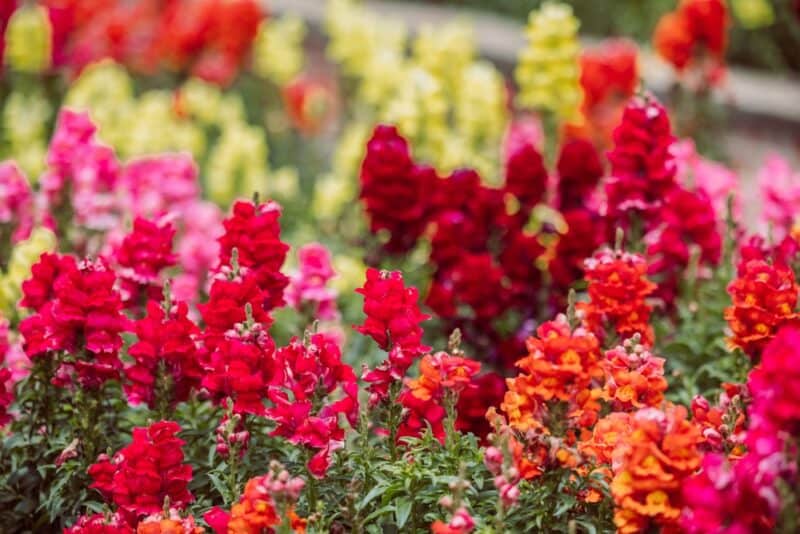
‘Floral Showers’ is a trailing, dwarf type. Add it to containers and window boxes or raised gardens. The ‘Floral Showers’ series is neutral-toned with bicolor flowers available in bronze, red, lilac, ivory, salmon, purple, wine, and yellow.
- Blooms: Short flower periods spring and fall
- Height: 6-8 inches
- Small space tolerant
- 115 days to maturity
- Full Sun or Partial Shade
Propagating Snapdragons
Growing from seed is relatively easy. Start seeds indoors 12 weeks before the last predicted frost date in your area and then transplant outdoors after all danger of frost. Be sure to harden the seedlings off before transplanting.
You can also direct-sow in the garden if you have a long growing season. It can take up to three months from seed to bloom.
To plant seeds, use a good seed starting mix in pots or seed trays. Moisten the soil before planting the seeds so you don’t disturb them. The seeds need light for germination, so gently press them onto the soil but don’t bury them.
Seeds need temperatures between 55-65°F for germination. Place them somewhere they will receive at least some direct sunlight or under supplemental grow lights.
Keep the soil moist but not soaking wet. Germination takes one to two weeks. Once seedlings are large enough to handle, they can be planted out. But remember, they need to be hardened off.
For self-seeding propagation of older plants, shake seed pods to aid dispersal.
Planting Snapdragons
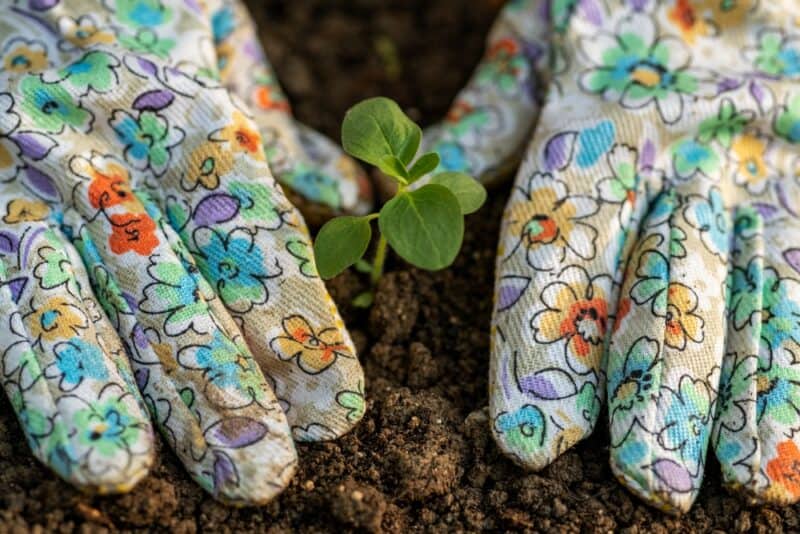
Hardy in USDA Hardiness Zones 7-11, this plant prefers cool temperatures between 40-70°F.
Whether you started your own seedlings or you bought some from the store, here’s a few things to keep in mind when putting them into the ground.
This plant does best in free-draining, rich soil with a neutral pH between 6.2-7.0.
They aren’t heavy feeders. Use organic matter like well-rotted compost or well-rotted manure when planting to give the plants the nutrients to start growing well.
Depending on the cultivar, they thrive best in full sun or partial shade. Some need protection during the heat of the afternoon.
Place plants at least 12 inches apart, depending on the cultivar. Some need more space, and some do okay with less. Keep the soil moist but not wet. They can tolerate a small amount of drought, but they will start to droop.
Caring for Snapdragons
Relatively maintenance-free and able to grow in less fertile soils, caring for snapdragons can be straightforward to get those gorgeous blooms.
You should support taller varieties by staking them or using floral mesh. Be sure to plant in the right light exposure. Most do well in full sun to partial sun.
To encourage growth and increase the number of blooms, pinch seedlings when they’re young.
These plants like plenty of moisture, though they can handle short periods of drought. Aim to keep the soil as moist as a well-wrung-out sponge. Be sure to maintain the soil moisture in extreme heat.
Water at the soil level and not on the leaves to help prevent disease.
Fertilize the plants every three weeks once they start to bloom. Any flower-specific fertilizer is fine.
You should deadhead spent flowers if you’re not collecting the seeds to encourage more flowering.
Apply an organic mulch to assist with keeping roots cool and moist. Straw, leaf mulch, well-rotted fertilizer, and shredded bark work well.
Some cultivars can be cut back in late summer to encourage fresh regrowth in the fall.
Common Pests and Diseases
Snapdragons can be affected by several different diseases, particularly if they are under stress or attack from pests. Watch for:
- Bacterial leaf spot (Pseudomonas syringae pv. antirrhini)
- Botrytis blight
- Damping off
- Powdery mildew
- Rust
Practicing good garden hygiene, both in the tool shed and the garden, will help reduce the risk. Always clean your tools between use.
Plant with appropriate spacing and trim back plants to maintain airflow. This helps humidity and trapped moisture from attracting fungal pathogens.
Remove sick plants or trim off any diseased leaves or stems.
Many new breeds of snapdragons are being created to be rust-resistant. Most heirloom types are susceptible to rust. If you spot rust, you’ll want to start treating immediately.
Pests
Like many plants, snapdragons have their pest challenges and cross plant infestations can cause devastation. Quick action at the first signs of these pests is a must.
Snapdragons are mostly deer and rabbit resistant.
- Aphids
- Cutworms
- Leaf miners
- Cyclamen mites
- Spider mites
- Slugs and snails
Slugs and snails target young leaves, so protect any new shoots, particularly at the soil level. If you raise seedlings indoors until they’re fairly large, slugs won’t completely destroy young plants.
If an infestation is severe, consider a knockout pesticide, only to be used when the friendly pollinators and insects have gone for the day.
Attracting predatory insects into the garden is a natural step to controlling infestations. Lady bugs, wasps, birds, lacewings, praying mantises, and dragonflies are all great pest hunters.
Companion planting will help attract as well as balance bug and animal populations in the garden too.
Best Companion Plants
Place your snapdragons in borders, containers, and gardens in large groups or combined with plants with similar growing conditions. Here are just a few good options:
- Salvia
- Sweet Alyssum
- Geranium
- Petunia
- Pansy
- Columbine
- Marigold
- Snow in Summer
Seed Saving and Using Snapdragons
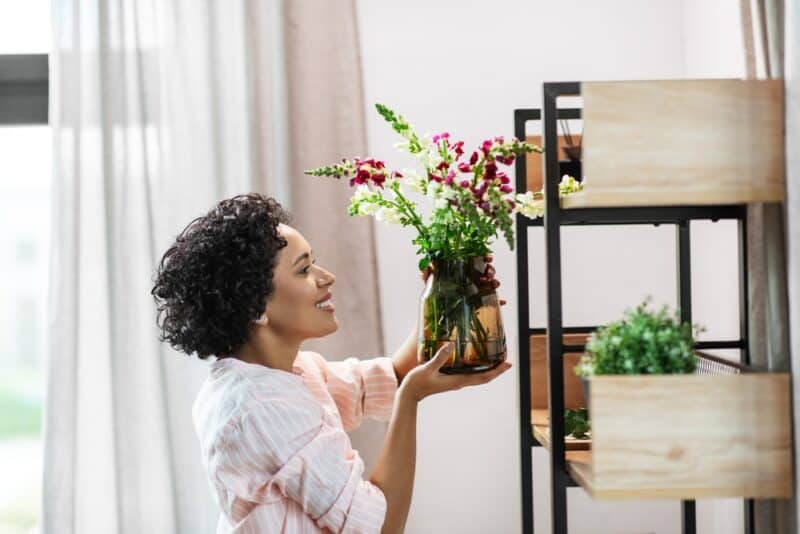
When using the blooms for a home vase display or for sale displays, it’s good to know how best to cut and store for longevity and value.
Cut the flowers leaving two to three sets of leaves on the main plant. This promotes new growth. Cut the blooms when the first few tiers start to open.
For older blooms that are still usable, snip off old spent flowers to encourage top tiers to open. Pick in the early morning or late in the evenings since heat decreases vase life.
Snapdragons are geotropic, meaning they will adjust their direct based on gravity. To avoid bending stalks and flower heads, place cut stems into a bucket that keeps them upright.
It’s easy to save seeds from snapdragons. Seed pods form quickly and readily. When pods are dried and partially open, harvest them and allow them to dry for a few days in a cool, dry spot.
To harvest, remove the seed pods when they’re dry. Tap the pod or rub them between your hands over a bowl to release the seeds.
Put them into an envelope to store them up to a year. Now you can grow your own plants next season.
Keep in mind that hybrids and some plants might not grow true to form. But you’ll get something beautiful no matter what pops up.
Snapdragons are edible, so you can use the flowers in salads, sandwiches, and soups.
Snapdragons work well in cut arrangements, in containers, in groupings, and as border plants.
